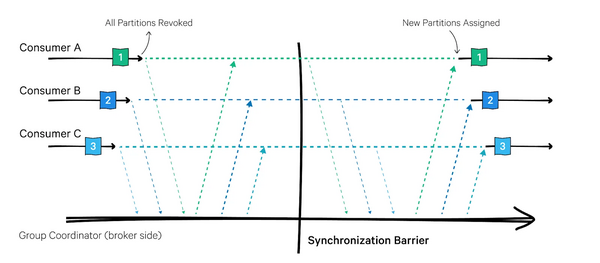The concept of rebalancing is fundamental to Kafka's consumer group architecture. When a consumer group is created, the group coordinator assigns partitions to each consumer in the group. Each consumer is responsible for consuming data from its assigned partitions. However, as consumers join or leave the group or new partitions are added to a topic, the partition assignments become unbalanced. This is where rebalancing comes into play[1].
How relalance works
Kafka provides several partition assignment strategies to determine how partitions are assigned during a rebalance and is called an “assignor”. The default partition assignment strategy is round-robin, where Kafka assigns partitions to consumers one after another. However, Kafka also provides “range” and “cooperative sticky” assignment strategies, which may be more appropriate for specific use cases.
